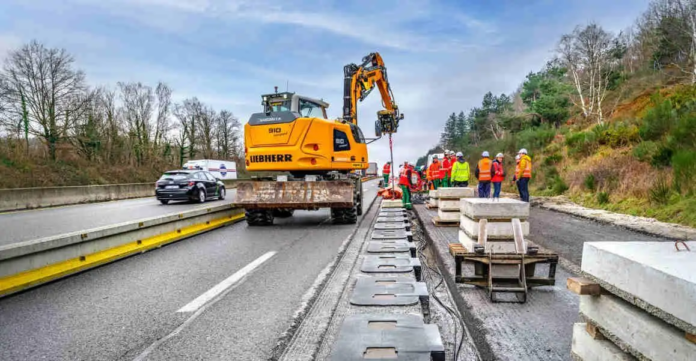The “Charge as You Drive” project is pioneering a revolutionary approach to electric vehicle charging through dynamic induction technology. This initiative, currently being tested on a 1.5 km stretch of the A10 motorway in Essonne, marks a major advancement in sustainable transportation. Unlike traditional charging methods that require vehicles to stop at charging stations, this system allows electric vehicles to recharge while in motion, using induction coils embedded beneath the roadway. Since early January, these coils have been installed under the right-hand lane, a section frequently used by heavy goods vehicles. The project is now entering its final phase before real-world testing begins, involving a diverse set of prototype vehicles including a heavy truck, a utility van, a car, and a coach.
This innovative technology is particularly significant in the effort to decarbonize the transport and logistics sector, which remains one of the largest contributors to greenhouse gas emissions. Since road transport is responsible for nearly a third of emissions, transitioning to electrified heavy goods vehicles could have a profound environmental impact. A key advantage of dynamic induction charging is its potential to reduce the need for large, resource-intensive batteries that rely on materials such as lithium, nickel, and cobalt. By minimizing the dependence on these raw materials and cutting down on emissions associated with battery production, this system presents an eco-friendly alternative that could redefine long-distance freight transport.
With similar trials being conducted in countries like Israel, Germany, Italy, and Sweden, the A10 project is the first of its kind on a motorway. The ongoing installation of induction coils is expected to be completed by April 2025, paving the way for full-scale testing in real traffic conditions. The system functions by generating an electromagnetic field from coils beneath the road surface, which is then captured by receiver coils on electric vehicles, converting it into electricity to power the motor and recharge the battery. This not only enhances vehicle autonomy but also reduces the cost and weight of batteries, making electric heavy goods transport more feasible. If successful, this project could be a game-changer, offering a sustainable and efficient solution for the future of road transportation.







